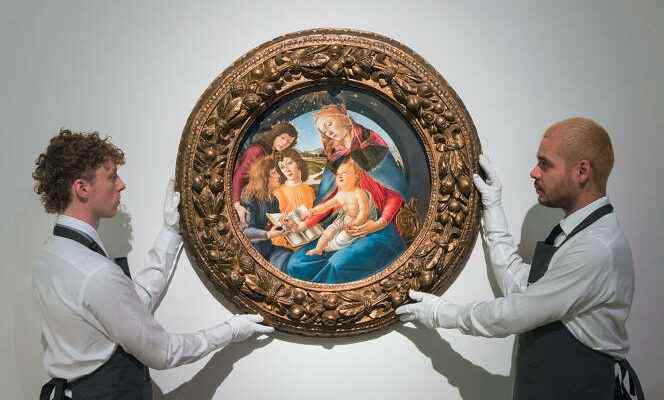Nothing, neither the war that is getting bogged down in Ukraine, nor the world economy at half mast, seems able to slow down an art market eager for stratospheric scores. On November 9 and 10, Christie’s should pass a symbolic milestone, that of the billion dollars, with the sale in New York of 150 works from the collection of Paul Allen, co-founder of Microsoft, who died in 2018.
The set, which covers five centuries of art, could therefore pulverize the 835 million collected in 2018 by the collection of banker David Rockefeller, and even exceed the 922 million dollars collected in 2021 and 2022 by the modern art set. and contemporary that property developer Harry Macklowe and his wife Linda Burg sold after their divorce.
Botticelli, Brueghel, Van Gogh, Gauguin, Monet, Manet, Giacometti… The breviary of works purchased by Paul Allen is dizzying. And even more certain estimates: 120 million dollars for a Sainte-Victoire Mountain, by Paul Cézanne, one of the last two in private hands; 100 million for The poseurs, de Seurat, a landmark painting by the pointillist; 90 million for a Forest by Gustav Klimt…
The inventory might seem obscene when the signs of financial distress multiply. So Christie’s has strategically decided to insist on the philanthropic nature of this sale: all proceeds will be donated to charitable causes, as yet unidentified.
A discreet billionaire
Single without children, Paul Allen was, in fact, among the first signatories of the Giving Pledge, this campaign launched in 2010 by billionaires Bill Gates and Warren Buffett to encourage the richest Americans to give away half of their fortune. During his lifetime, his philanthropic contributions amounted to more than $2 billion, or one tenth of his fortune, valued by Forbes at $20.3 billion.
Paul Allen was a discreet billionaire, whose investments were not always very happy. In the United States, he is no less inseparable from the success of Microsoft, which he co-founded in 1975 with his childhood friend Bill Gates. The two computer-savvy friends designed a platform capable of running computer programs on personal computers, the ancestor of Windows software. But very quickly, the rag burns between the partners.
Suspecting Gates of wanting to oust him, Allen quit Microsoft with a bang in 1983, while retaining his shares. The IPO of the company will make him a billionaire. The entrepreneur invests in sports, aerospace and film, while reshaping his hometown of Seattle.
You have 47.09% of this article left to read. The following is for subscribers only.
